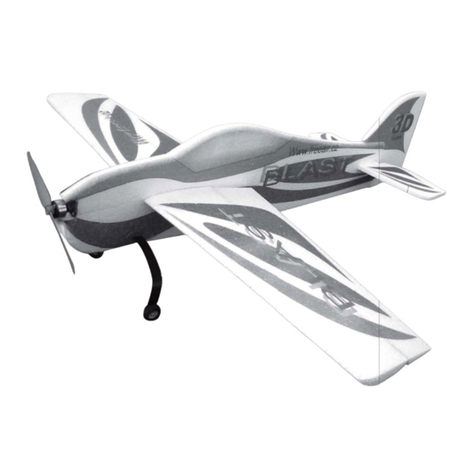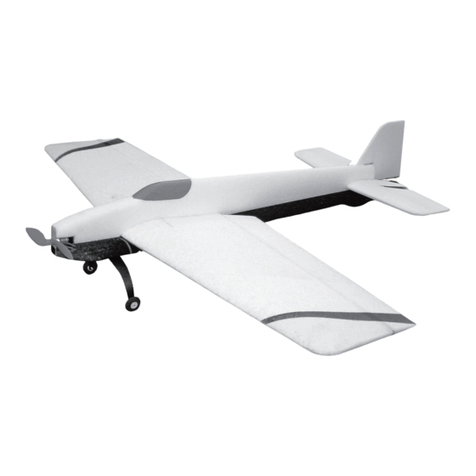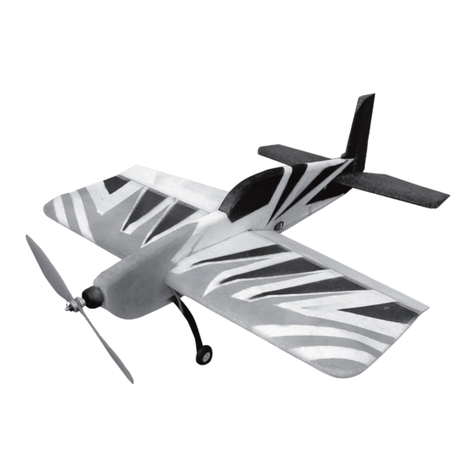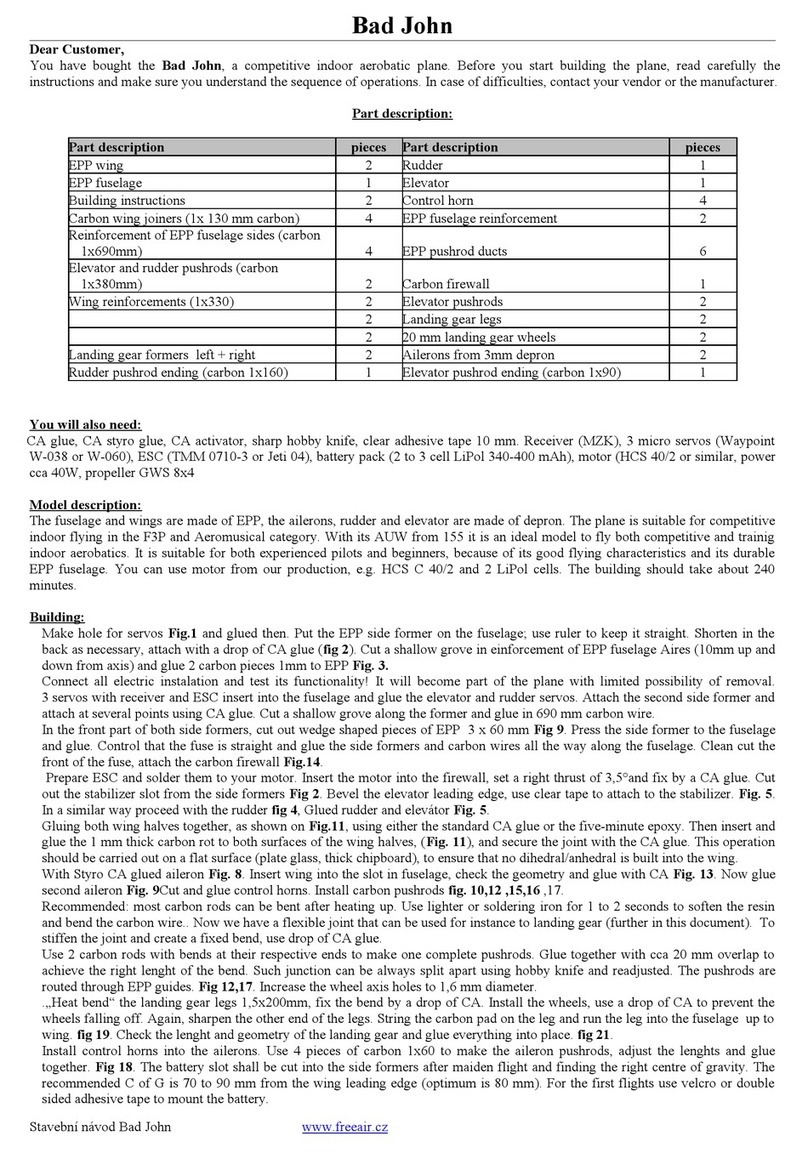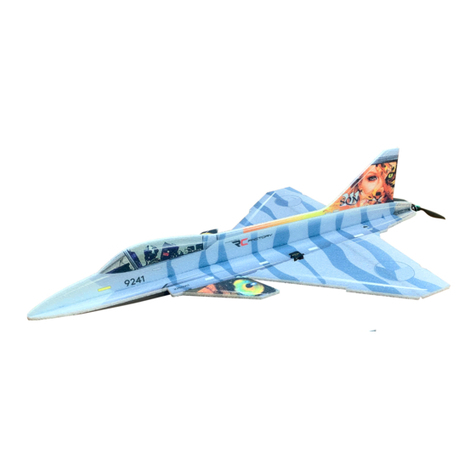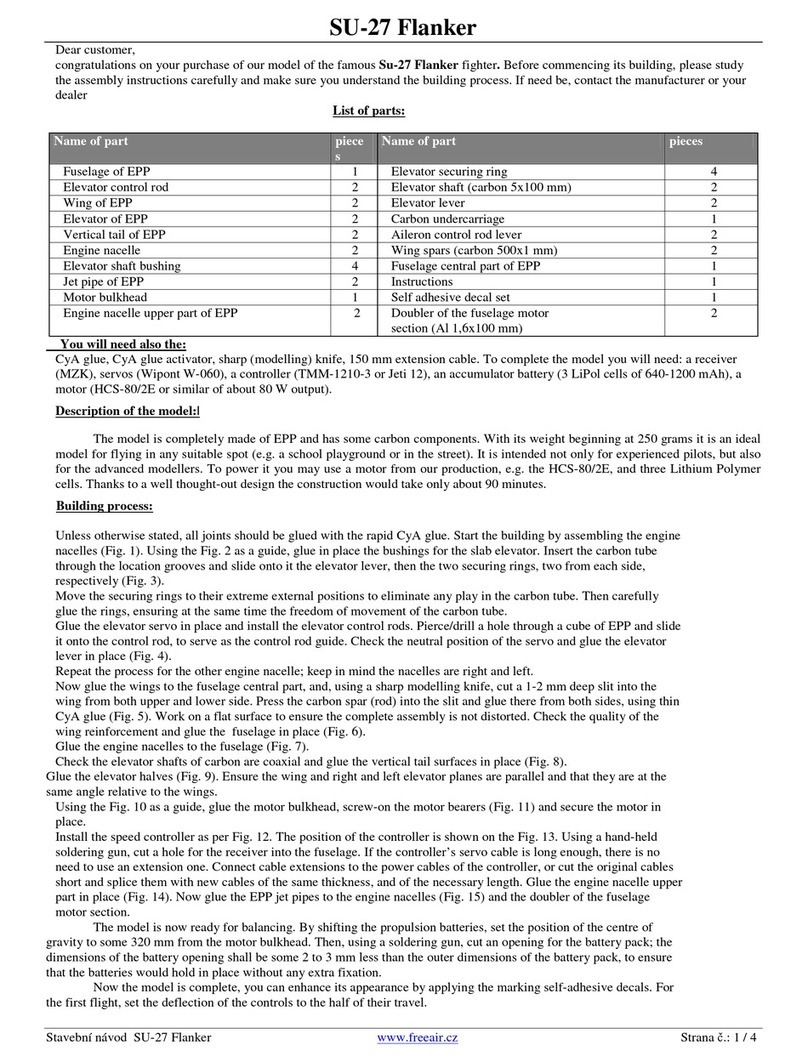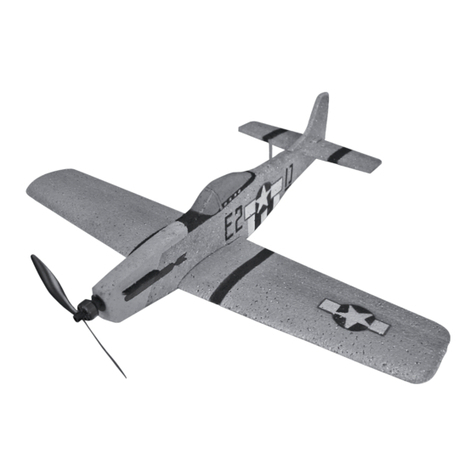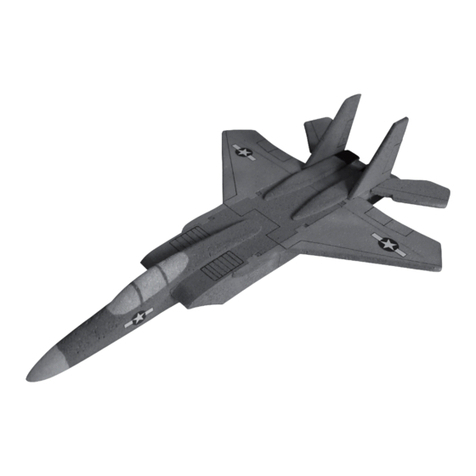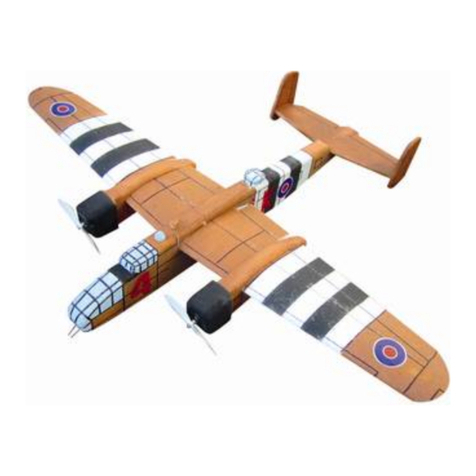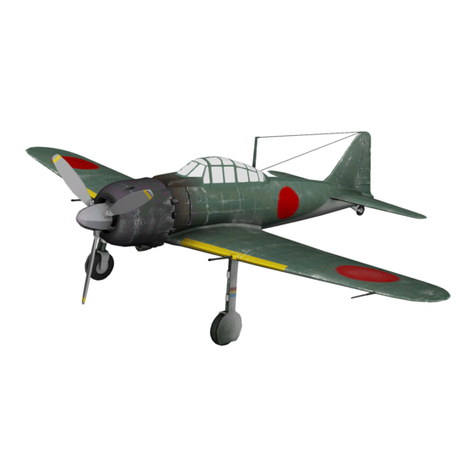
2Piranha www.freeair.cz
Piranha
Dear customer, congratulations on the purchase of the Pirañha model. To enjoy building
and flying the model most, please read carefully the building instructions before you begin and
make sure that you understand the building process.
DESCRIPTION OF THE MODEL:
The model is completely made of the EPP, strong enough to enable the Piranha to be
used on the water, on the ground and in the air. Due to its revolutionary concept it gives the
pilot the choice of pleasures among skimming above the ground or water surface or flying
in the air. It is slated not only for experienced pilots, but also for modellers of average skill.
You can power the Piranha with a motor from our production HCS-80/2E, and 3 LiPol cells +
the 8/4,3 propeller. Thanks to the well thought design the building should take about 90
minutes.
BUILDING PROCESS:
Unless otherwise stated, all parts are to be glued by the medium-thick CyA glue. Start the
building of the model by gluing both fuselage halves (Fig. 1).
According to Fig. 2, cut a slit through the fuselage, then glue into it the glassfibre stiffener,
using thin CyA glue. Now glue the floats in place (Fig. 3), and sand their front parts to mate
with the fuselage. If you plan to operate the model mainly on the water, devote a special
attention to the surface finish of the floats. Spray on them the 3M contact glue and, once the
glue slightly sets, apply the coloured self-adhesive tape to the surface. The other possibility is
to order the special plastic moulding (the Piranha Tuning Set No.1), and to glue it to the floats.
This improves the nautical qualities of the machine, but it increases its weight by about 50g,
making it less suitable for flying – the choice is yours. Crop the protruding part of the floats
(Fig. 4). Glue the vertical tail surfaces along the bottom edge of the fuselage (Fig. 5) so that
the hinge axes of both elevators and rudders were coaxial. Then glue the top elevator in place
(Fig. 6), ensuring at the same time that the elevator is parallel to the fuselage.
According to the Fig. 7, glue the auxiliary fins in place, so that their rear edges end at the axes
of the rudders. Now glue together the motor mount according to the Figs. 8 and 9, ensuring
the axis of the motor shaft is offset by some 3° to the right. Using a sharp knife, cut a 10mm
deep slit in the fuselage parallel to the fuselage axis and glue the assembled motor mount
in place (Fig. 10). Glue the servos carefully by their mounting flanges and secure them, as
a special safety measure by screws as if mounted to the bulkhead (Fig. 11). If you do not have
the Hydro modification of the controller, use the standard one. Using a hot glue pistol, seal the
openings in the plastic sleeve of the controller to waterproof it.
Using the Fig.12 as a guide, glue the controller to the motor bulkhead (it is possible to attach it
with a Velcro strip.). Bolt the motor flange in place and secure the motor. Using the five-minute
epoxy, glue the rudder servo arm (bellcrank) to the rudder servo (Fig. 13). The receiver may be
also waterproofed by inserting it into a rubber balloon and tying the end (this measure would
ensure complete waterproofing of the model). Then glue the fuselage top to its lower (float)
part. Glue the V-shaped bellcranks into the rudders (Fig. 14).
Now finish the model using any spray paint (the EPP does not degrade from any spray-can
paint). Install the rudder control rods (Fig. 15). Glue the cross-shaped braces of aluminium wire
(Fig. 16) according to the detailed drawing on the Figs. 17 and 18.
Glue the elevator arm in place (Fig 19) and install the control rods (Fig. 20).
Cut slits in the elevators and insert the connector levers to them (Fig. 21). Using the
interconnection rods, joint the upper and lower elevators (Fig. 22), checking and ensuring,
that the control surfaces are in a neutral position!!
This step is the finishing one - the model is built. Now check the position of the centre of
gravity (C of G), which should be some 291 mm from the model’s nose. By moving the C of
G. to the rear, the model becomes more nimble (therefore this modification is recommended
to the more experienced pilots only)) and vice versa – the more the C of G forward, the more
stable is the model.
For the initial flights, set the control surface deflection to about 50 %; the elevator servos
should be programmed for a delta-winged model. The rudders serve mainly to control the
direction of movement on the surface (both ground and water), but they are effective also
in the air. The properly balanced model takes-off in a few metres. Bear in mind, please, that
when throttling back, the model does not glide, it sort of sags to ground. If throttled back in
horizontal flight attitude, the Piranha lands by itself.
The recommended equipment: accumulator pack 910 mAh (KoKam), HCS C 80W/2 motor,
GWS 8/4,7” propeller, TMM 1012 Easy controller, 3 pcs of the W-060 servo, Penta receiver.
This model is no toy – therefore avoid flying in crowded places or such areas where health or
property not only of yourselves, but also of third persons could be jeopardised.
Lots of fun and many happy landings wishes FreeAir.
PARTS LIST
Part name Pcs Part name Pcs
Fuselage main part of EPP 2 Elevator and rudder interconnecting
rods/bellcranks 4
Elevator control rod 2 Motor mount 3
Floats of EPP 2 Rudder arm 2
Elevator of EPP 1 Instructions 1
Vertical tail of EPP 2 Elevator arm 2
Rudder control rod 2 Fuselage 1
Auxiliary surfaces 2 Elevators’ connecting pieces 2
Rudder control bellcrank 1 Doubler of the fuselage main part 1
You will need the following tools and materials:
CyA glue, CyA glue accelerator, a sharp (modelling) knife, and sandpaper. To complete the
model you need the following: a receiver (MZK), two servos (Wipont W-060), an AC controller
(TMM 1210-3 or Jeti 12 or a similar one), a battery pack (3 LiPol cells of 640 -1200 mAh),
a motor (HCS-80/2E or similar of about 80 W power output)


